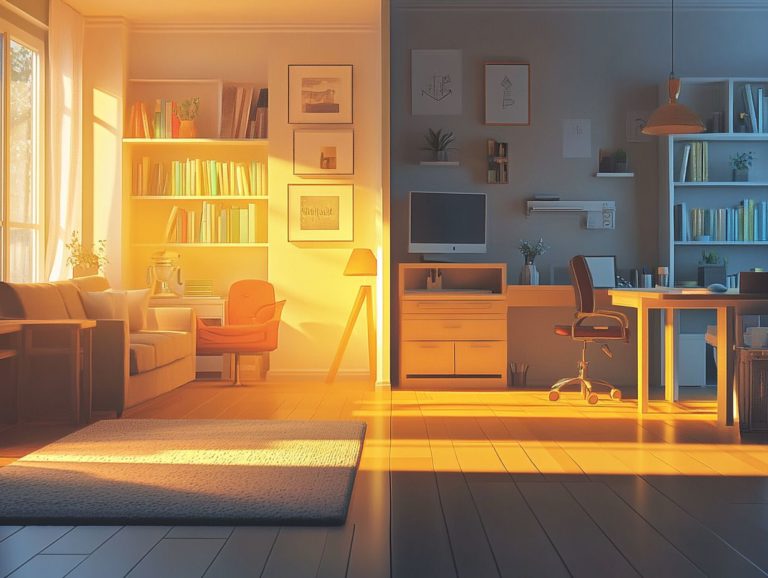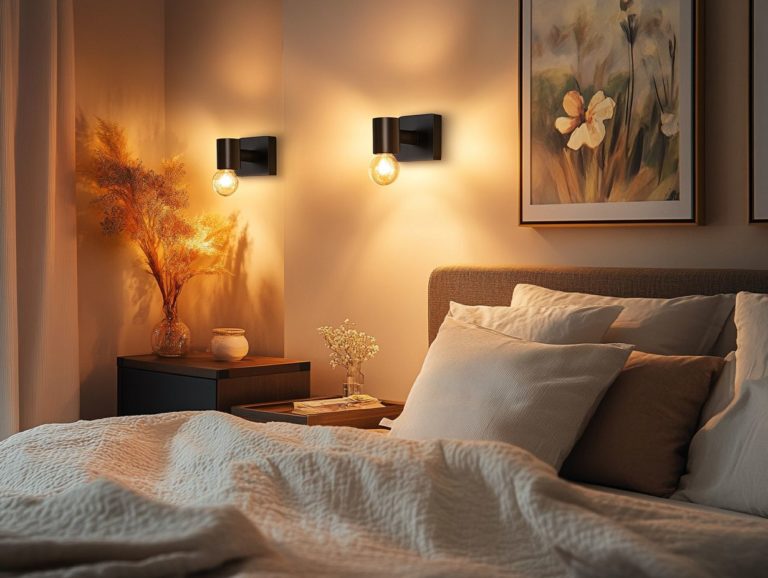“Lighting Safety: Tips for Homeowners”
When you think about crafting a safe and inviting home, lighting is absolutely essential. Inadequate lighting can introduce significant risks, ranging from electrical malfunctions to potential fire hazards.
This article delves into the common dangers linked to home lighting and provides you with practical guidance on how to prevent accidents. It addresses everything from proper installation and maintenance to vital safety measures for your outdoor lighting.
Moreover, you’ll uncover valuable insights on managing emergencies and ensuring that your home remains a secure sanctuary.
Contents
- Key Takeaways:
- The Importance of Lighting Safety
- Common Lighting Hazards in Homes
- Preventing Lighting Accidents
- What to Do in Case of an Emergency
- Steps to Take in a Lightning-Related Emergency
- Lighting Safety Tips for Homeowners
- Frequently Asked Questions
- What are some common lighting hazards in a home?
- How can I prevent electrical accidents related to lighting?
- What should I do if I experience a power outage in my home?
- Are there any precautions I should take when using holiday or decorative lights?
- How can I make my outdoor lighting safer?
- What should I do if I notice flickering or dimming lights in my home?
Key Takeaways:
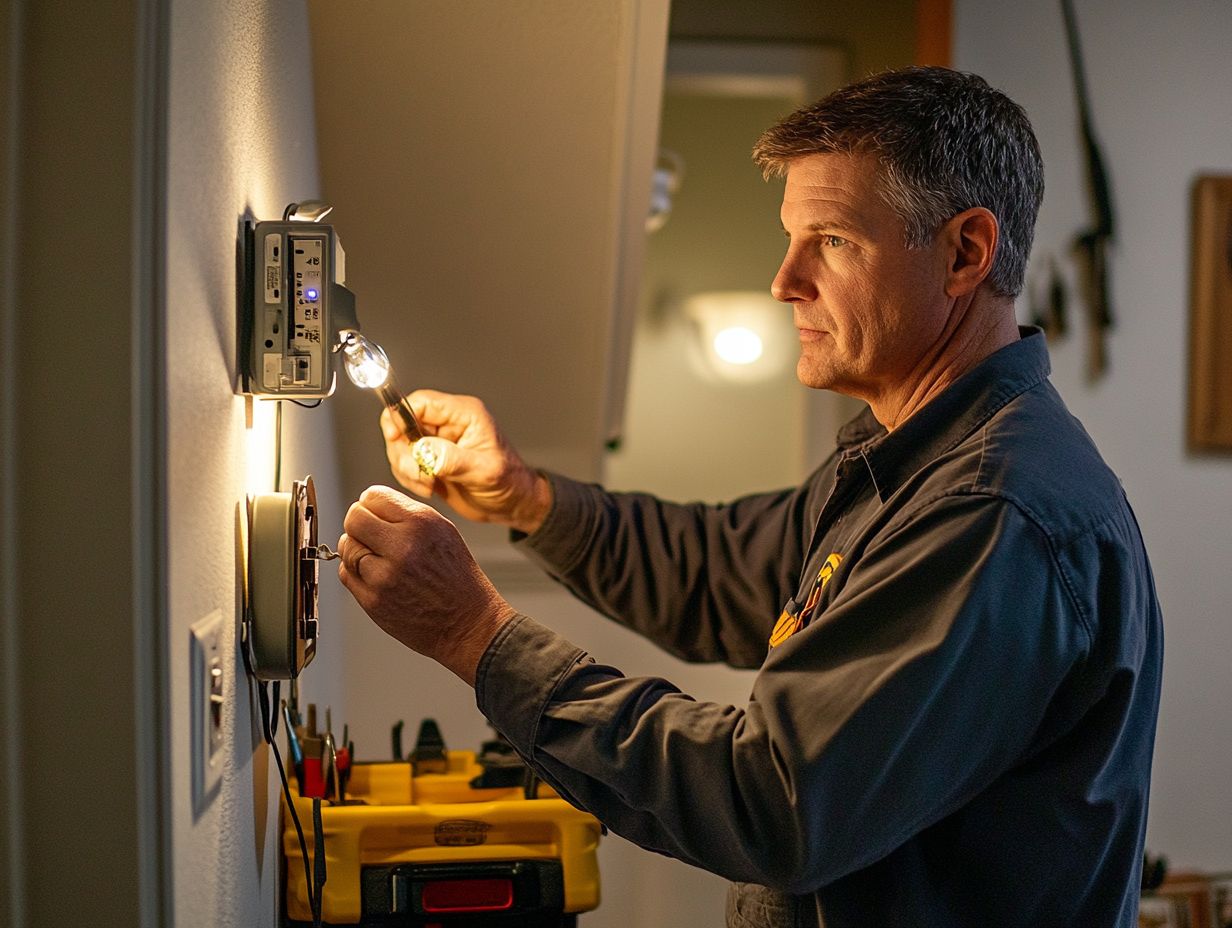
- Understanding the potential risks associated with lighting is crucial for homeowners in order to prevent accidents and injuries.
- Proper installation and regular maintenance of lighting fixtures can help prevent electrical and fire hazards in the home.
- In case of a lighting-related emergency, knowing the proper steps to take can help minimize damage and keep you and your family safe.
The Importance of Lighting Safety
As the festive season draws near, ensuring the safety of your holiday lighting becomes a top priority, especially when it comes to adorning your home with Christmas lights and other festive illuminations.
Implementing proper electrical safety measures is vital! Not only does it enhance the aesthetic appeal of your abode with vibrant decorations, but it also reduces risks from poorly installed lights.
Whether you opt for energy-efficient LED lights or classic bulbs, grasping the significance of safe installation practices and using the right equipment, such as special outlets that protect against electrical shocks, is essential for a worry-free holiday experience.
Stay Safe: Know the Risks of Holiday Lighting!
Understanding the risks associated with holiday lighting is essential for maintaining electrical safety and preventing accidents. This is particularly relevant during the winter season when many homeowners adorn their homes with dazzling lights.
These stunning displays not only elevate the festive spirit but can also present significant dangers if not managed with care. One prevalent risk is electrical shock, which can arise from faulty wiring or damaged cords. Holiday lights can easily turn into fire hazards if installation is careless, especially when overloaded sockets exceed their voltage limits.
Make sure to inspect for frayed wires! Avoid connecting too many strands, and always choose lights rated for outdoor use if they re going outside.
Proper cable management helps keep pathways clear and prevents tripping hazards, contributing to a safer holiday experience for everyone involved.
Common Lighting Hazards in Homes
In the realm of holiday lighting, various hazards can emerge in both outdoor and indoor settings. It s crucial for you, as a homeowner, to remain vigilant about potential trip hazards and overloaded sockets, as these can create dangerous situations during the festive season.
Prioritizing safety ensures that your celebrations remain joyful and worry-free.
Electrical Issues
Electrical issues can become a real headache when you’re setting up holiday lighting, especially if safety standards and proper installation techniques slip your mind. This oversight can lead to everything from flickering lights to far more serious hazards, including electrical shocks.
Neglecting the finer details might result in using the wrong type of extension cords, which raises the risk of overheating and potential fire hazards. It s essential to prioritize energy-efficient LED lights; they not only consume less power but also ease the burden on your electrical circuits.
You should also make sure that all lighting components meet the necessary voltage requirements to avoid overloading your outlets. By adhering to electrical safety standards, you can fully enjoy your festive displays while minimizing risks, ensuring a safe and delightful holiday experience for everyone involved.
Fire Hazards
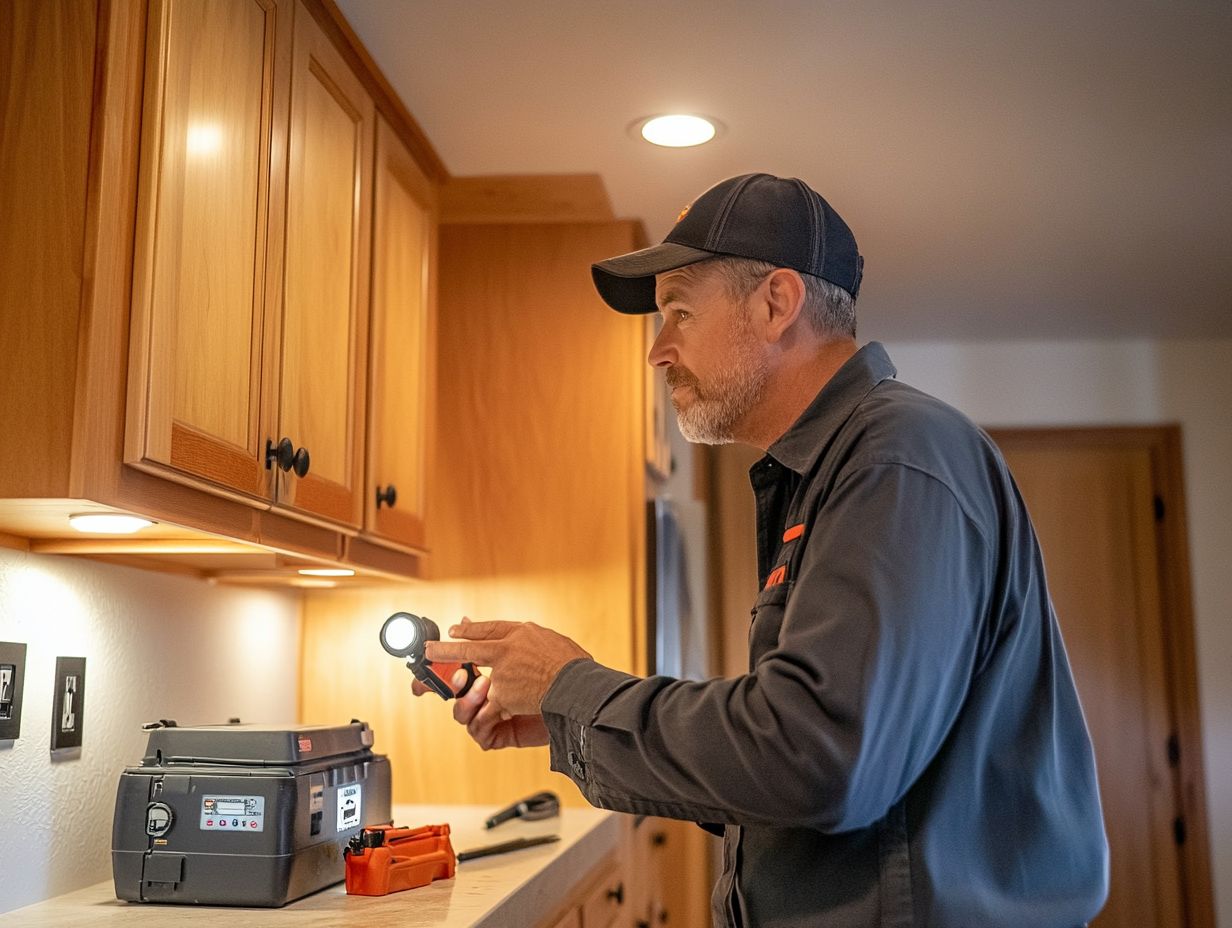
Fire hazards linked to holiday lighting pose a serious concern for homeowners, especially during winter when the use of Christmas lights peaks. It’s essential to follow safety tips that can effectively mitigate these fire risks.
The charm of festive decorations can easily distract you from the dangers associated with faulty wiring and overloaded electrical outlets. Improper use of decorations can lead to electrical fires that can ravage homes in mere moments.
Remain vigilant by inspecting your lights for any signs of wear and tear. Use GFCI outlets, which are safety outlets that prevent electrical shocks, to provide an additional layer of protection. Incorporating simple safety measures such as avoiding daisy chaining multiple extension cords and regularly checking for frayed wires can significantly reduce risks, allowing you to fully enjoy a safe and joyful holiday season.
Preventing Lighting Accidents
Preventing lighting accidents during the holiday season demands a meticulous approach to installation. Ensure that both your outdoor and indoor lighting are set up with stringent safety measures to safeguard your home and your peace of mind.
Proper Installation and Maintenance
Proper installation and maintenance of holiday lighting are essential for achieving both aesthetic allure and safety. Follow safety tips and choose reputable outlets when selecting your lighting equipment.
Start by securing each string of lights with plastic clips. This prevents sagging and significantly reduces the risk of accidents. Maintain a safe distance from flammable materials like dry leaves or festive decorations to sidestep potential fire hazards.
When selecting extension cords, choose the right gauge for the load to prevent overheating and ensure safe operation.
Regular maintenance checks throughout the holiday season are paramount. These checks allow you to catch any frayed wires or faulty bulbs that could compromise safety. By following these guidelines, you can create a captivating luminous display while keeping safety at the forefront.
Safety Measures for Outdoor Lighting
Implementing safety measures for outdoor lighting during winter weather is essential for homeowners. Make sure your holiday lighting is secure, functional, and poses minimal risks to people and property.
Utilizing Ground Fault Circuit Interrupter (GFCI) outlets is highly recommended. These outlets provide an extra layer of protection against electrical shocks. Ensure that all your lights are rated for outdoor use to guarantee their durability against harsh winter conditions.
Secure extension cords properly to prevent hazards. They can easily get damaged or trip someone when left exposed.
Regularly check for potential trip hazards, such as uneven surfaces and ice build-up. This can significantly enhance safety during installation and throughout the season. You and your loved ones can fully enjoy the festive atmosphere without worrying about avoidable accidents.
What to Do in Case of an Emergency
In case of a lightning-related emergency, it’s crucial for homeowners to be ready to take swift and effective action. This preparation addresses immediate risks related to electrical safety and helps mitigate potential fire hazards, ultimately safeguarding the well-being of both families and properties.
Stay prepared! Regularly check your lighting setup to ensure safety this holiday season.
Steps to Take in a Lightning-Related Emergency
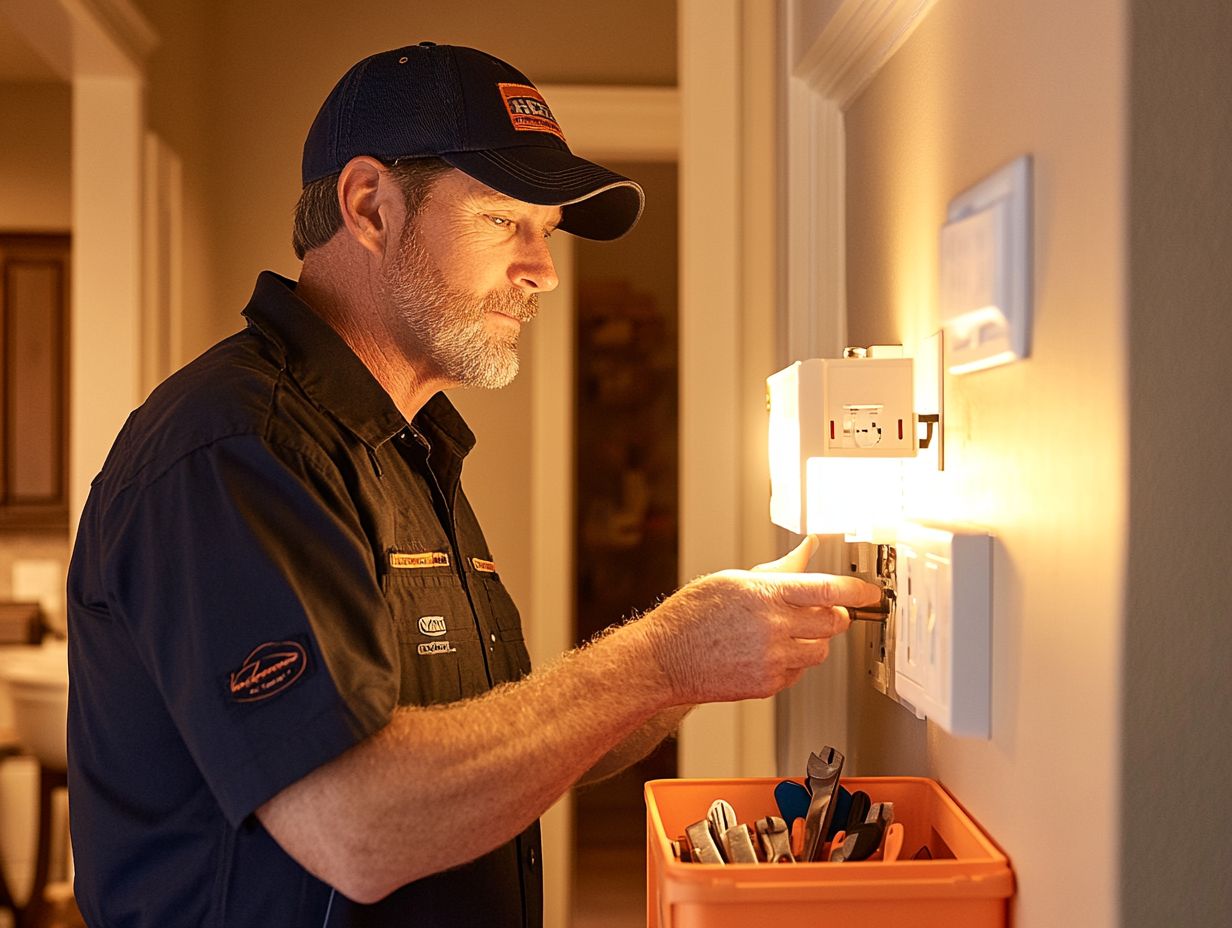
In the unfortunate event of a lightning-related emergency, follow specific safety tips to effectively manage the situation and ensure the well-being of your family and property.
Start by quickly identifying the source of the problem, whether it s flickering lights or blown fuses. Once you recognize the issue, it s crucial to turn off all electrical devices immediately to prevent further damage or danger.
Having a clear and practiced emergency plan in place is equally important. Ensure every family member is ready to act in an emergency. If the situation escalates or if you re uncertain about the extent of the problem, immediately seek professional assistance. They have the skills and equipment necessary to handle complex issues safely and effectively.
Lighting Safety Tips for Homeowners
For homeowners like you aiming to ensure maximum safety during the holiday season, understanding and using effective lighting safety tips is essential. This is particularly true for both indoor lighting and outdoor holiday displays.
Prioritizing these practices will help create a festive atmosphere while keeping your home secure.
Practical Advice for Ensuring Safety
To ensure your safety during the festive season, it’s essential to follow practical advice regarding holiday lighting, with a strong focus on electrical safety and effective installation techniques to minimize risks.
- Consider opting for energy-efficient LED lights. They save on electricity costs and generate less heat, significantly reducing fire hazards.
- When setting up your dazzling displays, secure extension cords properly to avoid tripping hazards.
- Confirm that extension cords are rated for outdoor use when necessary.
- Take advantage of GFCI (Ground Fault Circuit Interrupter) outlets, which help prevent electrical shock, especially in wet or damp conditions.
Stay updated on safety guidelines from reputable sources to confidently prioritize safe practices, making your decorating experience both festive and secure.
Frequently Asked Questions
What are some common lighting hazards in a home?
Common lighting hazards in a home include exposed wires, overloaded outlets, and outdated or damaged lighting fixtures. These can lead to electrical shocks, fires, and other safety hazards.
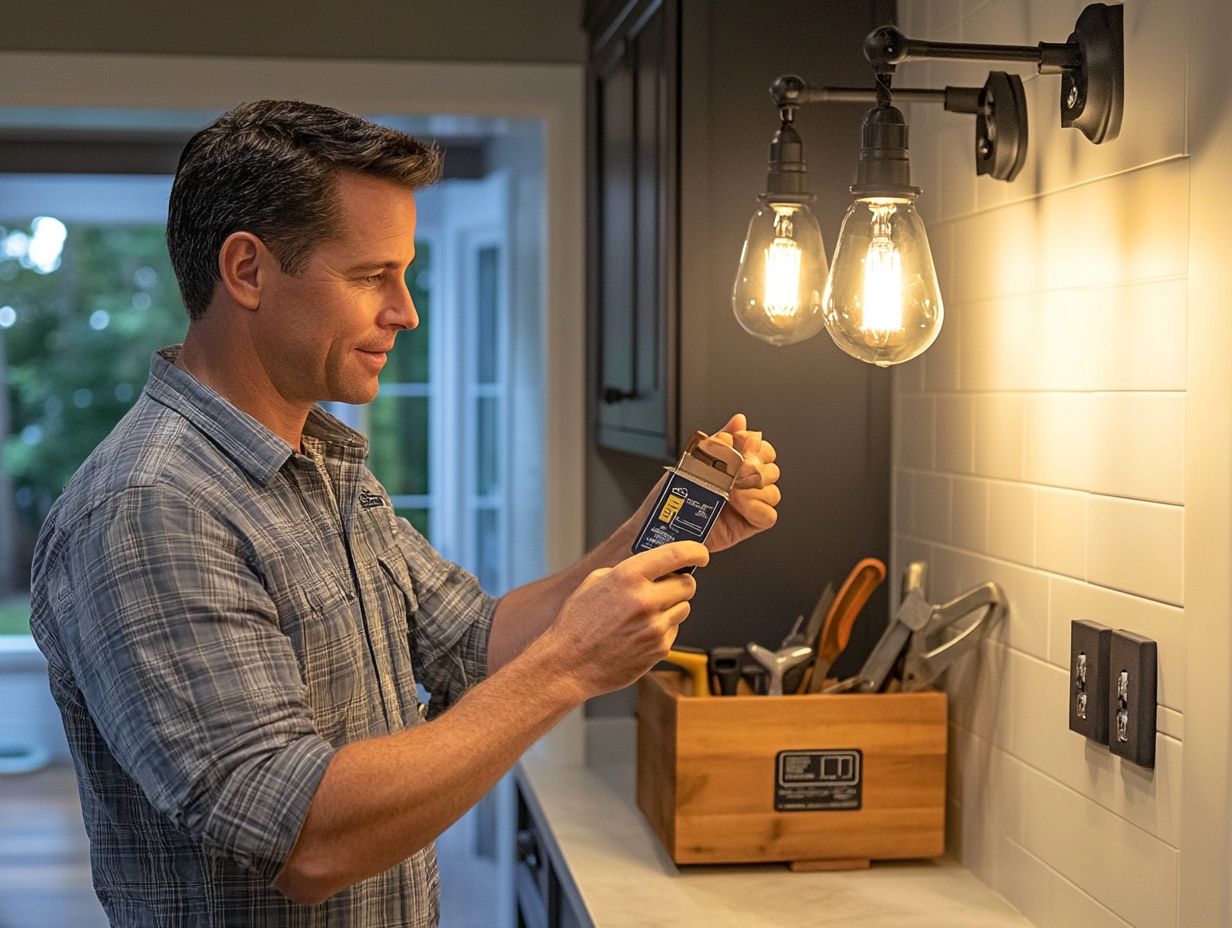
To prevent electrical accidents related to lighting, regularly inspect and maintain all lighting fixtures and cords. Avoid overloading outlets and never use damaged or frayed wires.
What should I do if I experience a power outage in my home?
If you experience a power outage, first check your circuit breaker or fuse box to see if a switch has tripped or a fuse has blown. If not, contact your power company for assistance.
Are there any precautions I should take when using holiday or decorative lights?
Yes, when using holiday or decorative lights, use lights approved for indoor or outdoor use, never overload extension cords, and turn off all lights before going to bed or leaving the house.
How can I make my outdoor lighting safer?
To make your outdoor lighting safer, install weatherproof fixtures, use ground fault circuit interrupters (GFCIs) for all outdoor outlets, and keep all cords and decorations at least 10 feet away from power lines.
What should I do if I notice flickering or dimming lights in my home?
If you notice flickering or dimming lights, it could be a sign of an electrical issue, such as a loose connection or overloaded circuit. Contact a licensed electrician to inspect and address the issue.

